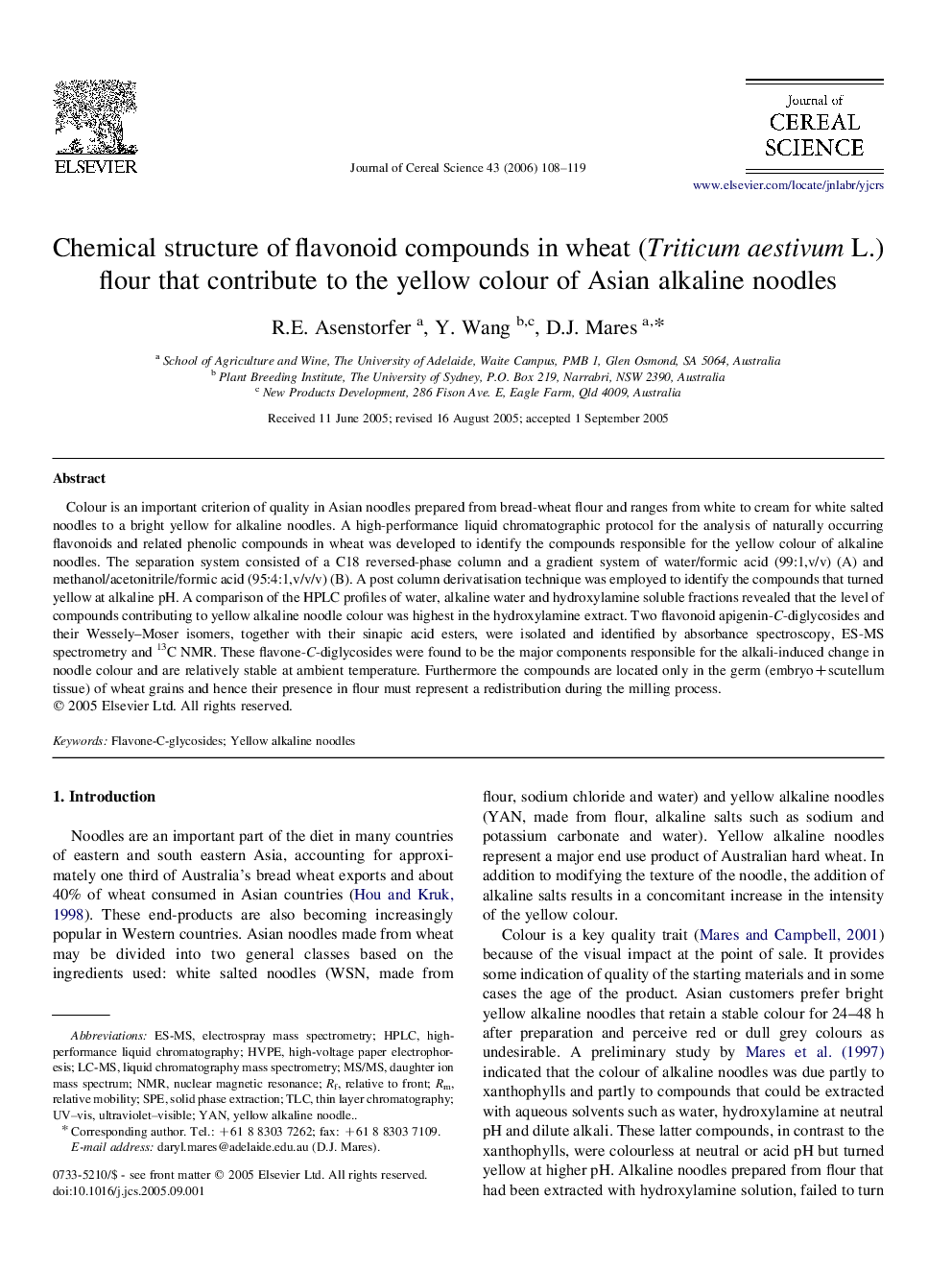| Article ID | Journal | Published Year | Pages | File Type |
|---|---|---|---|---|
| 4516886 | Journal of Cereal Science | 2006 | 12 Pages |
Colour is an important criterion of quality in Asian noodles prepared from bread-wheat flour and ranges from white to cream for white salted noodles to a bright yellow for alkaline noodles. A high-performance liquid chromatographic protocol for the analysis of naturally occurring flavonoids and related phenolic compounds in wheat was developed to identify the compounds responsible for the yellow colour of alkaline noodles. The separation system consisted of a C18 reversed-phase column and a gradient system of water/formic acid (99:1,v/v) (A) and methanol/acetonitrile/formic acid (95:4:1,v/v/v) (B). A post column derivatisation technique was employed to identify the compounds that turned yellow at alkaline pH. A comparison of the HPLC profiles of water, alkaline water and hydroxylamine soluble fractions revealed that the level of compounds contributing to yellow alkaline noodle colour was highest in the hydroxylamine extract. Two flavonoid apigenin-C-diglycosides and their Wessely–Moser isomers, together with their sinapic acid esters, were isolated and identified by absorbance spectroscopy, ES-MS spectrometry and 13C NMR. These flavone-C-diglycosides were found to be the major components responsible for the alkali-induced change in noodle colour and are relatively stable at ambient temperature. Furthermore the compounds are located only in the germ (embryo+scutellum tissue) of wheat grains and hence their presence in flour must represent a redistribution during the milling process.
